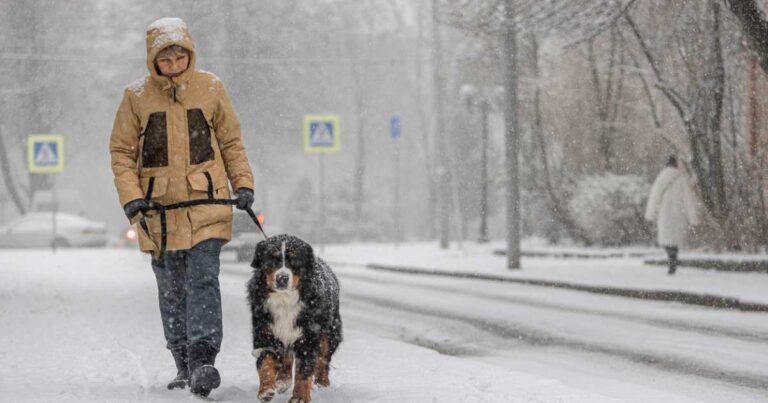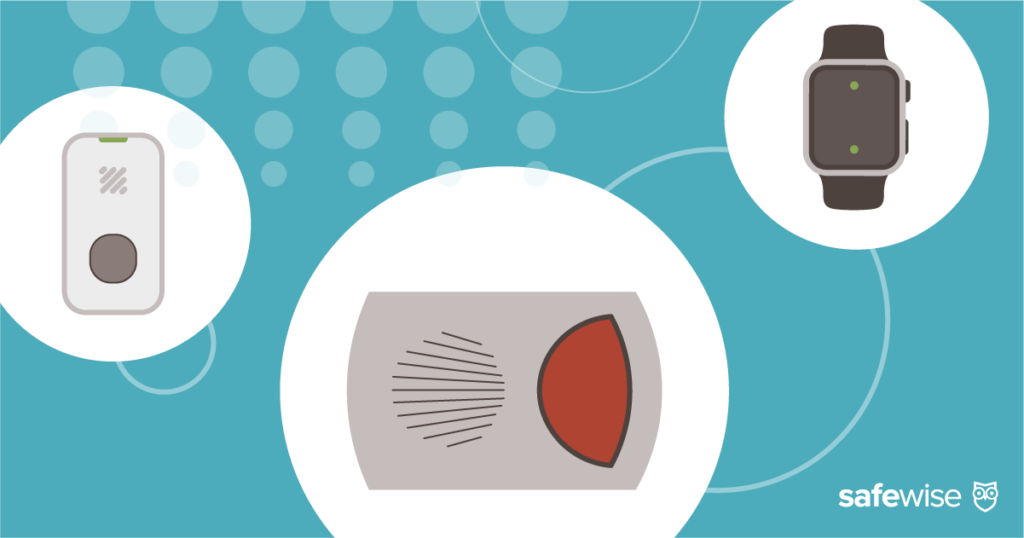Forecasters predict the first major snowstorm of the season will hit this week. Whether you're emotionally ready or not (winter's not my favorite), you must be physically ready—at home and in your car. To help you prepare for the first potential blizzard, we've gathered actionable tips from the American Red Cross.
How to Prepare for the First Big Snowstorm of the Season
For over 11 years, SafeWise experts have conducted independent research and testing to create unbiased, human reviews. Learn how we test and review.
Sign up for our free weekly newsletter to get the best safety news, product info, and deals.
By signing up, you agree to our Terms and Conditions and Privacy Policy.

Image: Alex Potemkin
Understanding winter storms
Winter storms can bring many hazards, including high winds, heavy snowfall, extreme cold, freezing rain, sleet, ice, and fog. These elements can disrupt transportation, heat, power, and communication—causing widespread inconvenience and even life-threatening situations. Schools, stores, and workplaces may close during these events, making preparedness essential.
It's important to note that climate change has altered the landscape of winter weather. While winters may get shorter and warmer in some areas, a warmer atmosphere can hold more moisture, increasing the likelihood of heavier snowfalls. These changes mean that even in regions experiencing milder winters, snowstorms can still pose a significant threat.
Preparing for winter storms: Actionable tips
1. Stay informed: Keep an ear out for critical weather alerts. When you hear "winter storm warning" or "blizzard warning," it's time to take action. And pay attention to the wind chill temperature—it tells you how cold it feels outside, regardless of the actual temperature.
2. Plan to stay warm: Make sure your home is ready to withstand the cold. Seal any drafts with caulking and weather stripping, and monitor indoor temperatures with a thermometer or thermostat. Check on vulnerable loved ones—especially older adults and babies. Dress for the weather when you head outside, covering all exposed skin, and have a plan for where to go if your home becomes too cold.
The National Fire Protection Association warns that heating equipment is a leading cause of home fires, with space heaters accounting for a significant portion of these incidents. To ensure a worry-free experience, follow these guidelines:
- Plug your space heater directly into a wall outlet.
- Avoid using extension cords or power strips.
- Create a safe three-foot clearance zone around your space heater.
- Always place your portable space heater on the floor for maximum stability and safety.
Learn more about space heater safety.
3. Gather emergency supplies: Stock up on essentials before a storm hits. Organize supplies into a Go-Kit (for immediate evacuation) and a Stay-at-Home Kit (for extended periods indoors). Ensure you have enough food, water, warm clothing, and medical supplies for all the people and pets in your home. Don't forget about your car—it's also wise to stock emergency supplies in your vehicle.
4. Don’t forget about pets: If possible, bring pets inside to keep them out of the elements. If you have animals that can’t come inside, The Humane Society recommends providing a dry, draft-free enclosure that gives them enough room to get comfy but small enough to hold in the pet’s body heat. In a pinch, the garage may be a safe spot for outside animals to shelter.
5. Ensure alarms are good to go: Test smoke and carbon monoxide detectors, replace batteries as needed, and check expiration dates. Most fire and CO alarms expire in 10 years. If you need to replace yours, pick new ones with battery backups.
6. Plan to stay connected: Sign up for local emergency alerts, monitor the weather, and charge communication devices. A battery-powered radio can keep you informed during power outages. If you have loved ones without a cell phone or the internet, set up a way to stay in touch with them if the power goes out.
7. Practice safe heating practices: If you're using space heaters or fireplaces, exercise caution to prevent fires. Make sure your chimney is ready for action before firing it up. Avoid using candles and—to prevent carbon monoxide poisoning—never heat your home with an oven or stove.
8. Act fast for frostbite or hypothermia: Recognize the signs of frostbite and hypothermia and seek emergency medical care immediately if needed. Remove wet clothing and warm the body gradually.
If you experience redness or pain in your skin during exposure to cold, seek warmth and protection immediately. Look out for these other signs of frostbite:
- Discolored skin: Skin may turn white or grayish-yellow.
- Unusual texture: Affected skin can feel firm or waxy.
- Numbness: Frostbite often causes numbness, making it hard to detect on your own.
9. Driving in winter conditions: If you must drive during a winter storm, check your vehicle emergency supplies, travel during daylight hours, and inform someone of your travel plans. Watch out for hazardous conditions like sleet, freezing rain, and fog.
10. If you are stranded: Stay in your vehicle and turn on your hazard lights. Keep the engine running for warmth, but ensure the exhaust pipe is clear of snow and other blockages to prevent carbon monoxide buildup. Stay hydrated, avoid overexertion, and watch for signs of frostbite and hypothermia.
Preparing for the first big snowstorm of the season is a combo of staying informed, gathering essential supplies, and practicing safe behaviors. By taking these actionable steps, you can protect yourself, your loved ones, and your home during the challenging winter months.
Related articles on SafeWise
Recent Articles



